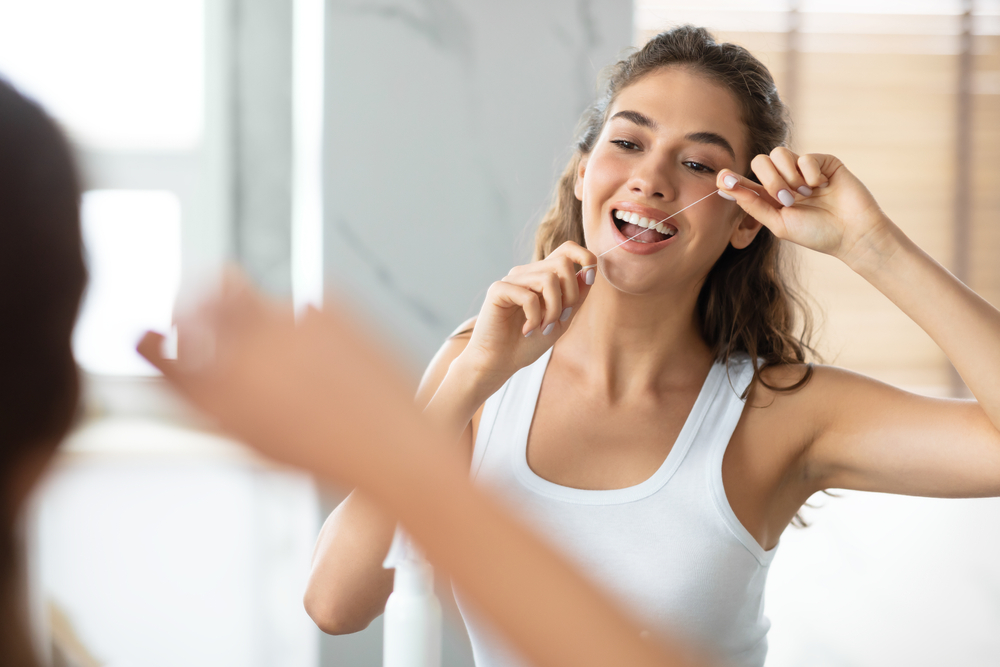
An essential part of dental hygiene, flossing lets you clean and remove the food particles stuck between your teeth. It reduces the bacteria and plaque that can cause cavities and gum disease. Brushing teeth twice daily is essential, but it does not clean the spaces between the teeth.
Importance of Flossing
Food particles get stuck between the teeth that toothbrush bristles cannot reach, leading to plaque buildup and gum disease. Flossing removes plaque, leading to good oral hygiene. It helps keep the gums healthy and teeth cavity-free.
Dental plaque is a sticky film that accumulates on the teeth, leading to gum disease and tooth decay. Flossing between teeth dislodges and removes plaque, reducing the risk of cavities and gum disease.
Correct Technique
It is not enough to floss; one must floss correctly to avoid damage to teeth and gums and ensure maximum benefit. The following is a step-by-step guide on proper flossing techniques.
Cut off about 24 inches of dental floss, wrapping most of it around both middle fingers and leaving about 2 inches of floss to clean the teeth
Use your index and thumb fingers to hold the floss taut
Place the dental floss between two teeth and glide it up and down against both sides of each tooth
When the floss reaches the gums, curve it to form a C shape at the tooth's base. That allows it to enter the space between the tooth and gum.
Use a fresh length of floss for each tooth
Flossing With Braces
Flossing with braces is more challenging and takes more time. Waxed floss is the best for flossing with braces since it is less likely to get stuck in the braces. The following is a guide on flossing with braces.
Cut off two feet of waxed dental floss and thread it between the primary wire and the teeth
Wrap the loose ends of the floss around the index fingers to move it around easily
Gently press it between the two teeth, moving it up and down along the sides of both teeth
For the upper teeth, use the floss to create an upside-down U and glide it along the side of each tooth until the gumline
Carefully unthread the floss from behind the wire, avoiding popping it out of the tooth to avoid dislodging it
Best Time to Floss
The most effective time to floss is before brushing your teeth. Doing so first allows for the removal of food particles and plaque caught between the teeth. That makes brushing more effective. The best type of floss depends on several factors. These include the size of the spaces between your teeth, personal preferences, and whether you have braces or bridges.
Conclusion
Good oral hygiene involves more than merely brushing your teeth. It also includes flossing correctly and regularly. Use the correct type of floss or tool that works best for your teeth and gums. Plan regular dental cleanings at least twice a year, along with regular brushing and flossing.
For more on dental hygiene, visit MAC Family Dentistry at our office in Mandeville, Louisiana. Call (985) 238-3797 to book an appointment today.








